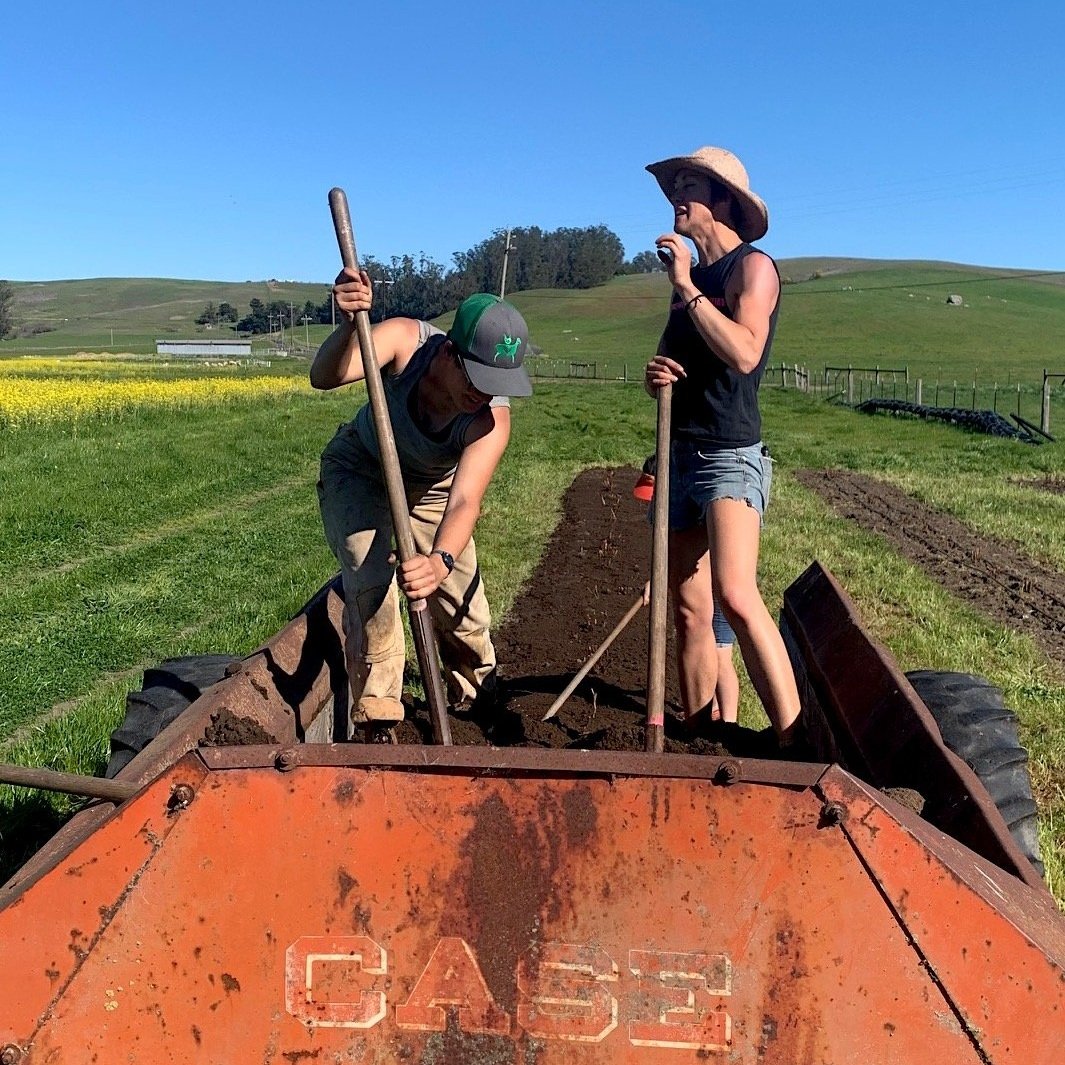By Cecilia
Welcome to summer! Our harvests are turning into all day affairs, and hopefully you're starting to see that in the CSA barn. While we don't have any tomatoes, peppers or corn yet, they are ripening fast. I check the Jimmy Nardello peppers almost everyday for hints of red. One of the veggies that I am most excited about is our yellow squash. We have trialed a few different varieties over the years, and not all were very successful. The current one we grow is called yellowfin and I love its small size and slightly sweeter flavor.
I'm sure everyone is excited to hear that the wait for carrots is over! They came out of the field this morning looking perfect and tasting delicious. One of my favorite ways to eat carrots (other than in cake) is as a quick pickle. The recipe below calls for Chile de Arbol peppers, but I think any of our dried peppers would be a fantastic addition.
PS. I have an insider's secret that new potatoes MIGHT be ready for 4th of July, but you didn't hear it from me.
CSA barn hours:
Summer: 2:30-6:30 pm (starts the week after daylight savings in March)
Winter: 2:30-6 pm (starts the week after daylight savings in November)
Pick List:
Eggs
Cortland Yellow Onions
Alto Leeks
Rhonda Beets
Yaya carrots
Hakeuri Turnips
Pink Beauty Radish
Polaris Fennel
Dark Star, Cocozelle, and Yellowfin Zucchini
Emiko Napa Cabbage
Gypsy Broccoli
Green Arrow Shelling Peas
Old Growth Palm and Rainbow Lacinato Kale
Champion Collards
Lettuce
Basil, Parsley, Cilantro, and Dill
Albion Strawberries
Tea Blends and Ground and Whole Chiles (Please bring your own containers!)
Sonora wheat flour and wheat berries
Pick your own flowers and herbs
Saltonstall Olive Oil (Please bring your own jars!)
Starts available in the shade tunnel (Please only take starts from area in between the two signs!)
Quick Pickled carrots with Chile and Cumin, from Marthastewart.com
12 ounces peeled carrots
1 shallot, sliced
3 dried chiles de arból
1/2 cup apple cider vinegar
2 tablespoons sugar
2 teaspoons cumin seeds
2 teaspoons kosher salt (we use Diamond Crystal)
Cook carrots in a pot of boiling salted water until crisp-tender, 2 to 3 minutes; drain and place in a heatproof shallow container.
In a small saucepan, combine shallot, chiles, apple-cider vinegar, 1/4 cup water, sugar, cumin, and salt. Bring to a boil, stirring until sugar and salt have dissolved.
Pour brine over carrots to cover. Let cool completely, then cover and refrigerate at least 4 hours and up to 5 days. Remove from brine to serve.






















































